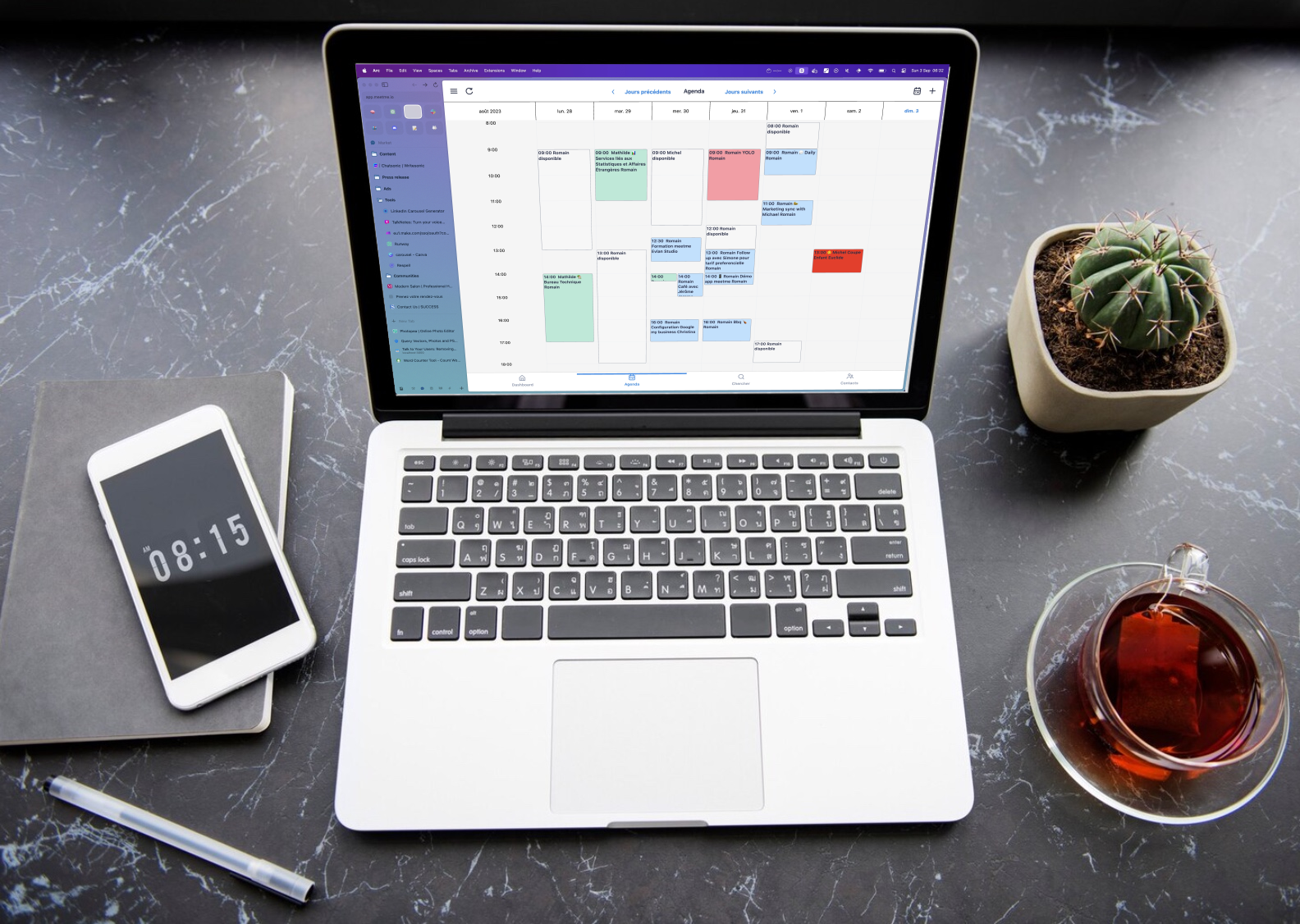
 Romain de Wolff
Romain de Wolff Entrepreneur conducting an online meeting with a client.
Entrepreneur conducting an online meeting with a client.
When I first launched my startup, I was filled with that fiery enthusiasm many of us entrepreneurs can relate to. But enthusiasm isn't the sole ingredient for success. Soon, I realized that the bridge between my service and potential clients was more like a tightrope – thin, wobbly, and easy to fall from. It wasn't my service that was the issue, but the barriers that stood between me and my clients when trying to schedule that all-important first meeting.
Getting face-to-face (or screen-to-screen, in our digital age) with users is one of the most effective tools in our arsenal. It's where the magic happens – rapport is built, needs are understood, and deals are sealed. Trust me, I've sat through countless meetings, and the ones that were easier to schedule always started on a better note.
Now, let's get something straight. If you're targeting entrepreneurs between the ages of 25 and 45, you're dealing with a fascinating mix. Many of us are millennial and Gen Z cuspers, fluent in the language of technology but still valuing the handshake (or virtual fist bump) of personal connection.
A few years back, I attended a seminar where I found myself sandwiched between a 28-year-old who ran a cutting-edge AR startup and a 42-year-old with a blossoming eco-friendly fashion brand. Their businesses couldn't have been more different, but their communication preferences were strikingly similar. Both wanted tools and systems that were swift, intuitive, and hassle-free. Yet, they didn't want to feel like just another appointment in the calendar. The lesson? Balance. Blend tech efficiency with the warmth of human touch, and you'll have this demographic eating out of your hand.
Ah, barriers. Those pesky hurdles that stand between a potential client saying "Yes, let's chat!" and actually getting them on the line. Let me share a little story. A few years into my entrepreneurial journey, I had a potential client – let's call him Jake. Jake was excited about our service, eager to talk, and seemed like a surefire conversion. But, our back-and-forth emails trying to nail down a meeting time turned the process into a mini-nightmare. By the time we finally settled on a slot, his enthusiasm had waned. That initial spark? Diminished.
Barriers in scheduling don't just waste time; they waste momentum. When a user is ready to talk, they're on the cusp of a decision. If we let technicalities and inefficiencies stand in their way, we risk not just their patience, but also their interest. And trust me, in today's fast-paced world, waiting even an extra day can feel like an eternity.
 Meetme in action: The ultimate synergy of calendars, online scheduling, and efficiency on one desk.
Meetme in action: The ultimate synergy of calendars, online scheduling, and efficiency on one desk.
You might be nodding along, thinking, "Oh, I've been there." But what exactly are these barriers we keep talking about? Over the years, I've identified a few culprits that seem to repeatedly crash the party:
Once, I used a scheduling platform that felt like it was designed in the dark ages. Potential clients would often complain about its clunkiness. I felt the frustration too!
A client from Australia once ended up calling me at 3 am my time. I took the call (because, you know, the hustle never sleeps) but realized that such blunders could easily be avoided.
I remember another instance where a client preferred a good ol' phone call, but my system was set up for Zoom meetings. The disconnect caused unnecessary friction.
Sometimes, we think more options = better service. But offering too many choices can overwhelm and confuse users. I learned this the hard way when I provided multiple calendar links for different types of meetings. Spoiler: It wasn't helpful.
The essence is, barriers come in various shapes and sizes. Some might seem small, but as the saying goes, "the devil is in the details."
You know, every challenge I've faced in entrepreneurship has always come with a silver lining – a solution. Over time, I’ve identified some game-changers when it comes to barrier-free scheduling:
There are tools out there designed with both the user and entrepreneur in mind. I eventually switched to a modern scheduling platform that made the process as easy as 1-2-3. Hint: look for platforms that integrate with your calendar, offer automated reminders, and can adjust for time zones automatically.
To eliminate confusion, I began using a single calendar link that lets users choose the type of meeting they want. This eliminates the chaos of juggling multiple links.
While I'm a Zoom aficionado, I've learned to be flexible. Now, my scheduling tool allows users to pick their preferred mode, whether it's a phone call, Zoom, or even a Teams meeting.
This sounds so simple, but a brief email detailing what the client can expect from the meeting (duration, agenda, mode) can set clear expectations and eliminate potential barriers.
 Content entrepreneur reaping the benefits of efficient scheduling.
Content entrepreneur reaping the benefits of efficient scheduling.
Amid all this talk of technology, it's crucial not to forget the magic of personal touch. Remember the millennial and Gen Z cuspers we talked about? Yeah, they still crave authentic connections.
One of my favorite things to do is to send a quick personalized video message after someone schedules a meeting. It's a 30-second clip of me saying thanks and expressing excitement about our chat. This tiny gesture has resulted in more enthusiastic and engaged clients. They don’t see just a brand; they see a face, a smile, a person behind the service.
After every meeting, regardless of its outcome, I make it a point to ask for feedback. Not about the service or product, but about the scheduling process. Was it easy? Were there any hitches? Would they recommend any changes?
You'd be surprised how valuable this feedback is. It's direct insight into any remaining barriers and provides an opportunity for constant improvement. Remember Jake? After our scheduling fiasco, I asked him for feedback, and his insights were instrumental in refining my process.
In the fast-paced world of entrepreneurship, resting on our laurels isn’t an option. Just as we iterate our products and services, our approach to scheduling and communication must evolve.
If there's one thing I've learned, it's that our job isn't done once we've removed barriers. We must stay vigilant, keep our ears to the ground, and be ready to adapt. After all, the easier we make it for our users to connect with us, the higher our chances of building fruitful, long-lasting relationships.
And there you have it! Barrier-free scheduling isn't just about convenience; it's about setting the stage for successful connections. As we journey forward, let's keep those channels of communication as open and seamless as possible. Happy scheduling!
Explore our informative articles to improve your productivity, provide quality customer service, and stay up-to-date with the latest industry trends.